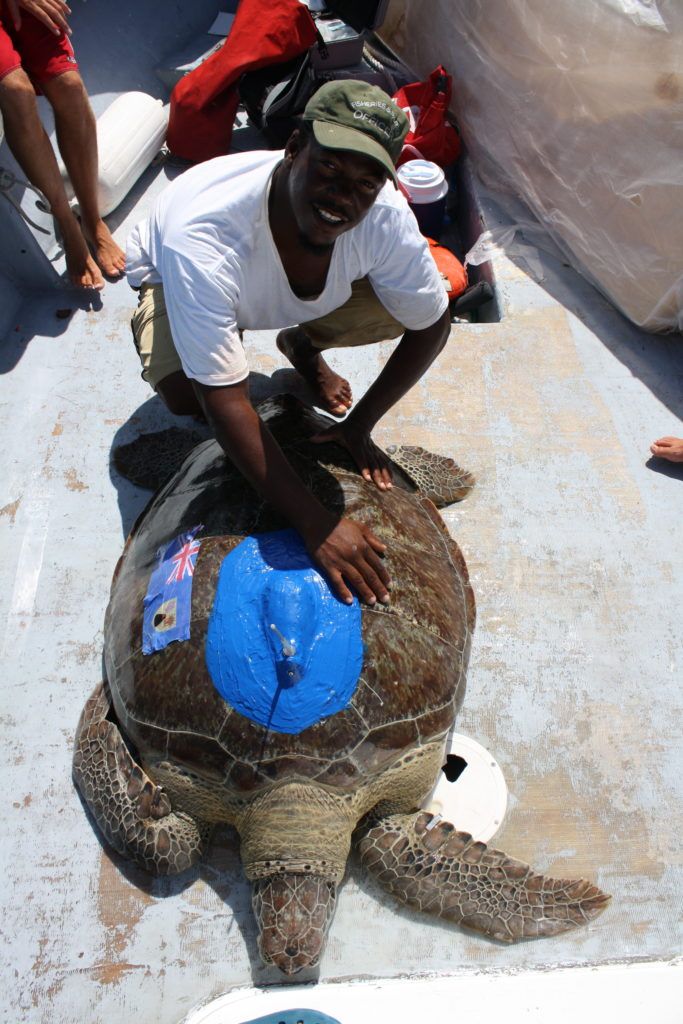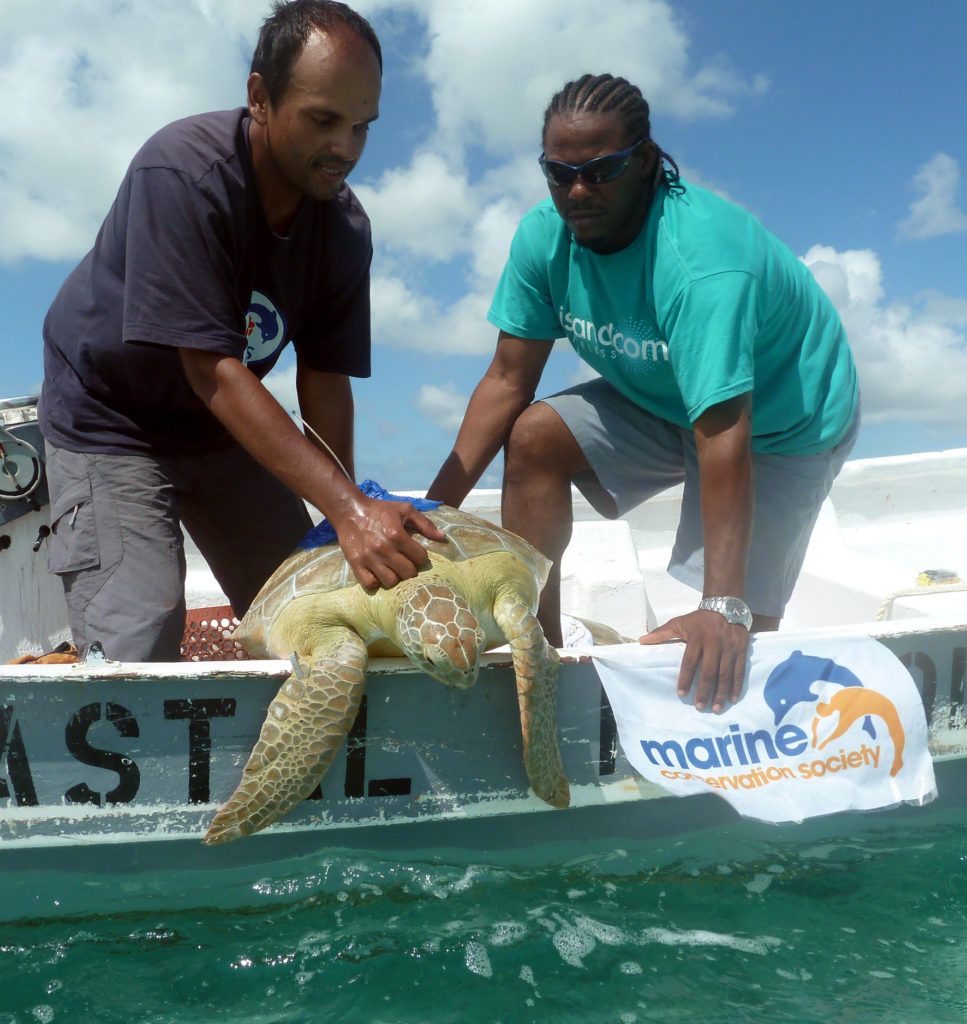Teenage green turtles in the Turks and Caicos Islands
Saving green turtles in the Caribbean
With PTES funds, a team from the Marine Conservation Society (MCS) has been studying how and where young green turtles move and feed throughout the Caribbean. Sea turtles have been fished for their meat and shell for centuries. The level of consumption is so great that green turtles are now listed as endangered on the IUCN red list. It’s thought that over 45,000 turtles are taken globally each year. One third of these are legally fished in the Caribbean by traditional coast groups or small-scale fisheries; an important source of food, income and cultural identity. MCS has been working in the region for a long time and their partnership with local fishermen has successfully led to legal changes in regulations to ensure fishing of turtles is now sustainable. PTES helped support their ‘Size matters’ campaign, engaging the local community in setting upper and lower size limits on the turtles that can be fished.
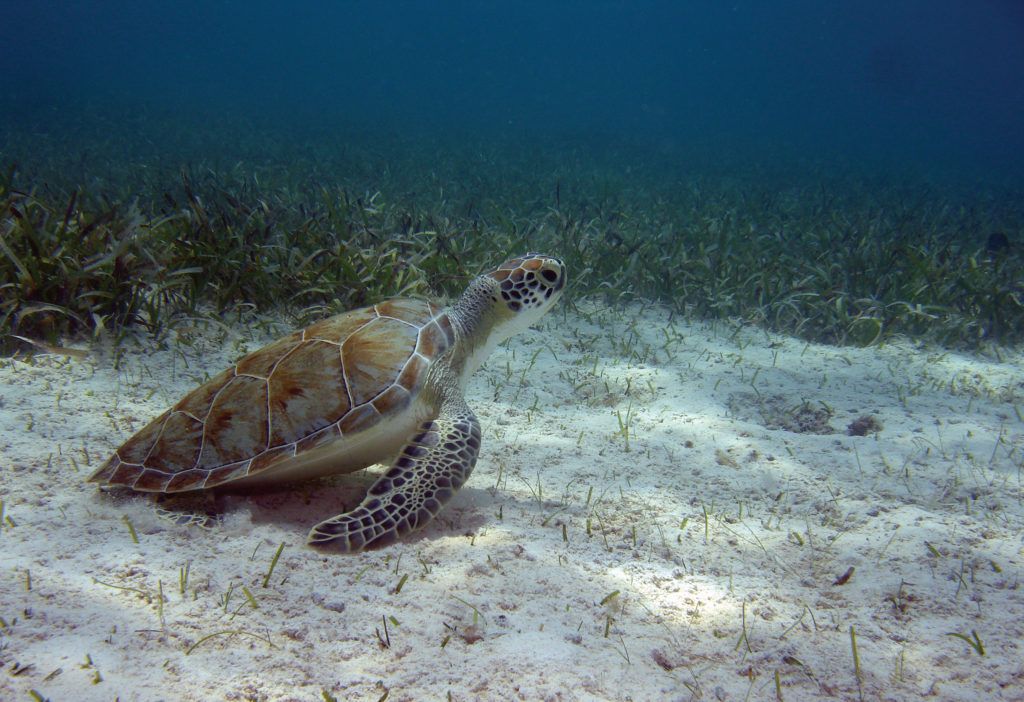
PTES is proud to be continuing the partnership with MCS. This latest research is based on and around the Turks & Caicos Islands (TCI), a chain of 120 low islands and cays (pronounced “keys”), only six of which are permanently inhabited by people. TCI is one of the UK Overseas Territories and, as such, the UK is responsible for the waters around the islands. The TCI has an extensive network of 23 Marine Protected Areas (MPA) which covers almost 700km2. The MCS team aimed to investigate whether one of the largest MPAs, a RAMSAR site covering 568km2, was an important foraging ground for the turtles. It’s important to know because only some parts of our seas are protected from fishing and other damaging activities. We need to know if these areas are where the turtles spend most of their time or, if they roam more widely, whether more protection is needed. It’s also critical to monitor whether the protection these areas are given is sufficient or whether more effective management is needed.
Tracking turtle migration
For fifteen years MCS team members Peter Richardson and Amdeep Sanghera fitted flipper tags and satellite transmitters to teenage turtles to see where they spent their time. They worked with local fishermen to put tags on 623 green turtles. These tags helped them identify individual animals and enabled Peter and Amdeep to see where the turtles turned up. They also fitted 16 larger teenage turtles with satellite transmitter tags which were attached to the top of their shells. The tagged turtles were released where they were captured on remote and pristine seagrass beds in the MPA.
Their results reveal that sub-adult green turtles do stay within the MPA while they are growing, but as they near maturity will migrate hundreds of miles across the Caribbean to search out adult feeding grounds. Four of the 16 satellite-tagged turtles migrated away TCI. Three of these had originally spent months after release within the MPA, while one turtle migrated away just 13 days after being let go. Two of the migrating turtles headed west to Cuba, one headed north to the South-East USA and the high seas, and another headed south to Central America. This turtle eventually settled on the Colombian coast some 900 miles from TCI having swam through the territorial waters of eight Caribbean countries. Four of the flipper-tagged turtles were captured years after release by fishermen in Nicaragua’s waters, and another was caught in Venezuela’s coastal waters.
The importance of Marine Protected Areas
Peter told PTES that “this exciting, collaborative research shows how important this MPA is for green turtle populations in the Caribbean region. These turtles are feeding and growing up on the seagrass beds at this one relatively small site for years, and then travelling to countries throughout the region to live the rest of their lives. Turtles from around the region really depend on these key habitats. They have shown us why we should invest resources in protecting these special, wild and pristine places in our UK Overseas Territories now and for generations to come.”
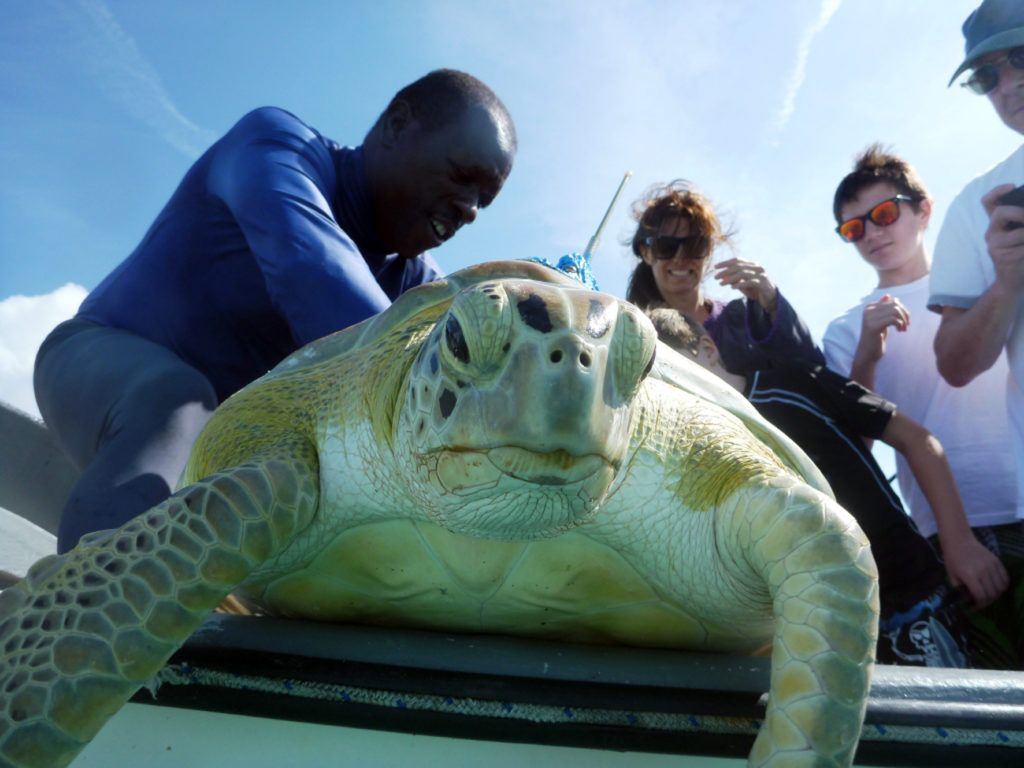
PTES’ Grants Manager, Nida Al-Fulaij, added “Research like this contributes hugely to the long-term survival of a species. PTES is extremely proud to have supported this investigation. Comparing and contrasting the movement of so many different individual turtles in the same region provides really detailed insights into the ecology of a species that is not easy to study, so this is very welcome news for turtles in the Caribbean.”
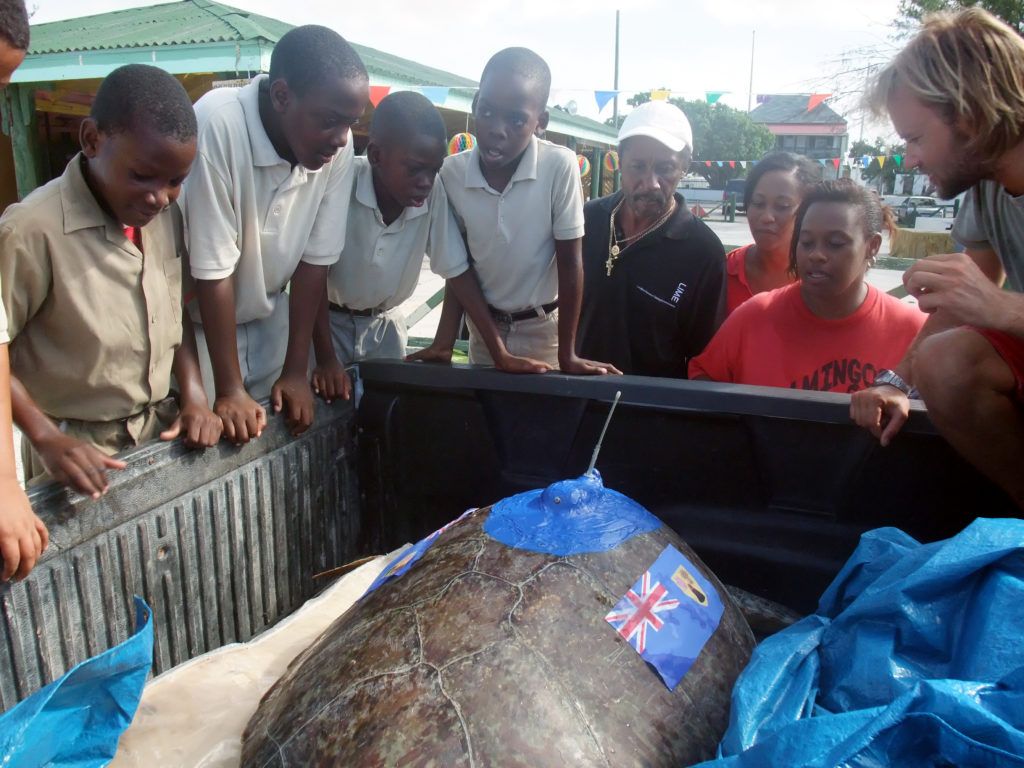
The paper, “Spatial Ecology of Sub-Adult Green Turtles in Coastal Waters of the Turks and Caicos Islands: Implications for Conservation Management” is an open access article and can be accessed here: https://doi.org/10.3389/fmars.2020.00690
Thank you for helping us fund this vital work to save green turtles in the Caribbean.
If you’d like to support other areas of our work, please donate or set up a direct debit here today.
Thank you.

